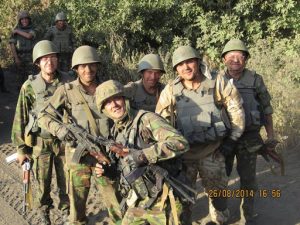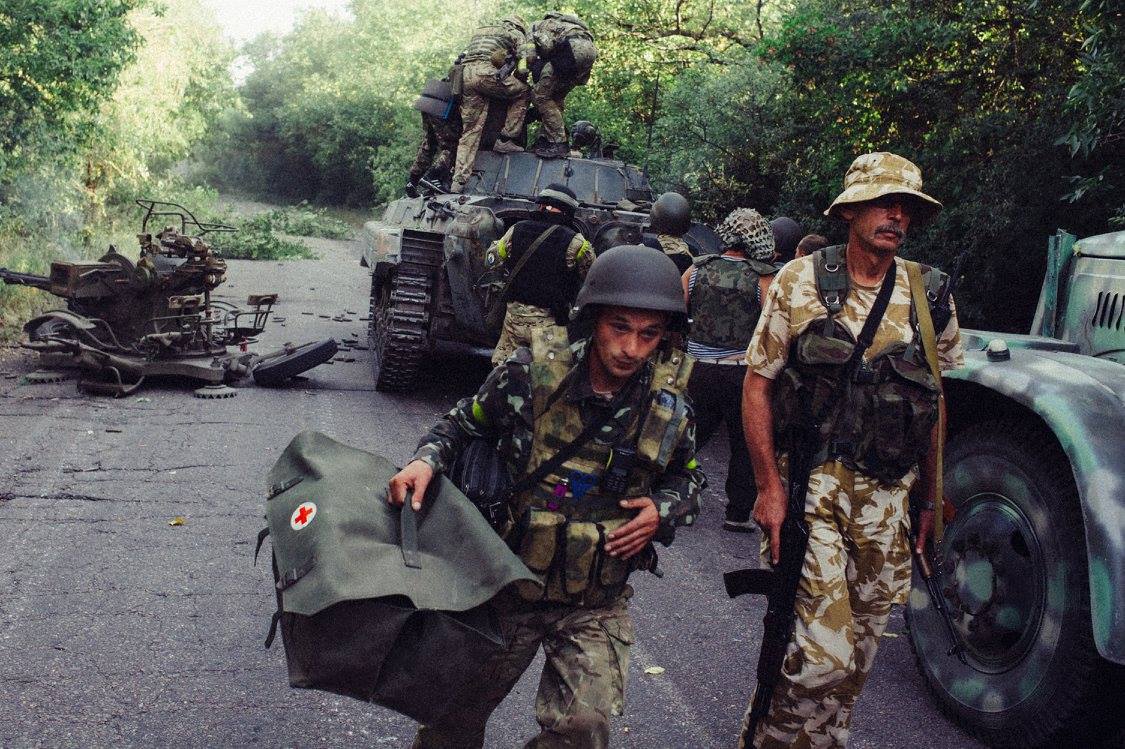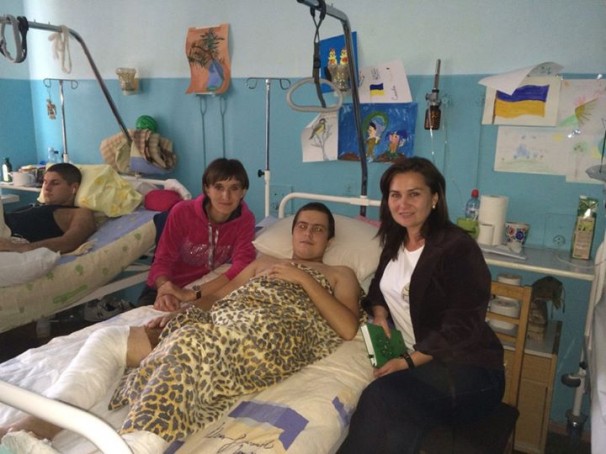“Surviving Iloviask is like being born a second time, not according to the laws of nature, but to the law of war at the Battle of Ilovaisk. Patriotism means love for one’s homeland, and not merely the love of an idea.” says Yuri Neroslik, artist, veteran with the 92rd Separate Mechanized Brigade of the Armed Forces of Ukraine.

AfterIlovaisk - About the Project
AfterIlovaisk is a documentary film and photo project. Its goal is to preserve the memory of the participants and the tragic events that occurred in August 2014 near the city of Ilovaisk, Donetsk Oblast. August 29 marks the anniversary of the day the Ukrainian army was surrounded and attacked as they emerged through the “green corridor”. That day, the Ukrainian army, encircled in the “Ilovaisk cauldron” suffered the greatest losses of its entire history. The project team is currently doing interviews and recording videos based on military photographs, as well as recordings of families of the deceased in order to document their recollections, thoughts and eyewitness accounts that confirm the presence of the Russian army in military operation at Ilovaisk. Each soldier has a different story to tell: some were taken prisoner; others walked for days over fields to escape the enemy before arriving at Ukrainian-held checkpoints; still others were wounded and then transported to safety several days before the creation of the “green corridor”; then there are those whose names are still on the list of men who “disappeared without a trace”; yet others that perished during the evacuation when they travelled in long columns of vehicles. These individuals will all go down in history as being united by the same idea: to defend their country. They could never reconcile themselves to being mere bystanders; for them, it was “inconceivable” to stay home throughout such a crisis.
Project Goals
- To draw up a comprehensive documentation of eyewitness accounts from Ukrainian military servicemen and volunteer fighters in the photo gallery on our website: com
- To make an English language translation of all interviews (an English language website) in order to reach a wide international audience.
- To publish a book of important moments with both photographs and recollections.
- To maintain a professional website as a source of historical information about the war in eastern Ukraine.
- To make a documentary film about the individuals who took part in the events at Ilovaisk.
“We are convinced this project is crucial for our historical records and for our children. Granted, one photo or one essay won’t end this war, but if we don’t try, then only the propaganda will remain: false accounts and propaganda articles, books and films that have absolutely no bearing on the reality of what transpired. If nothing is done to set the record straight, then in just a few years the lies and manipulation of facts will be taken as equally authoritative with the documentary evidence, and no one will be able to discern the truth.” says Maks Levin, LB.ua photographer and project coordinator.Markiian Lyseiko, photographer and project coordinator continues:
“Memory sanitizes difficult and terrible moments in one’s life. It is our contention that all that happened must be preserved for posterity. It’s not our goal to fabricate the truth. However, it will now be possible for someone who was never in the Anti-Terrorist Operation zone to visit our site and to get an idea of what it was like. We’ve collected over 100 short histories, so you can reach your own conclusions just by reading 20 or 30 of them.”In 2016, twenty stories were written and the first part of the project was completed with the support of LB.ua, the Canadian Ministry of Foreign Affairs, and Internews. Most of project has been undertaken by volunteers, working free of charge or paid a small honorarium for their work on texts and images, editing, transcribing, and other technical skills related to digital platforms. Since the beginning of 2019, the project has continued under the auspices of a newly created charitable organization - AfterIlovaisk. AfterIlovaisk is also available on Facebook.





